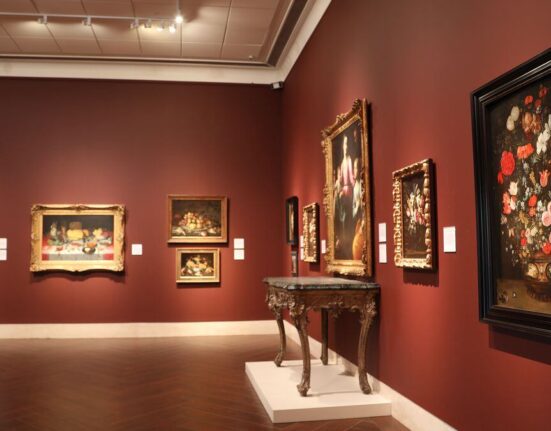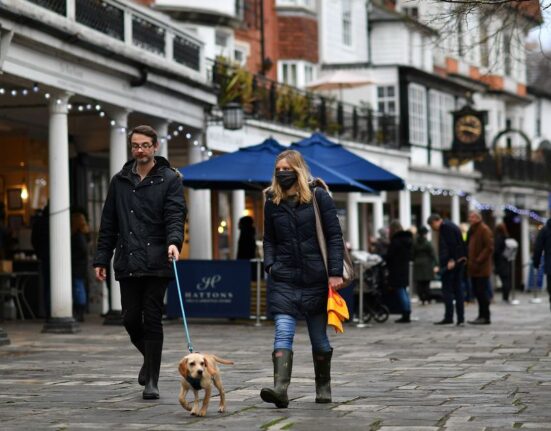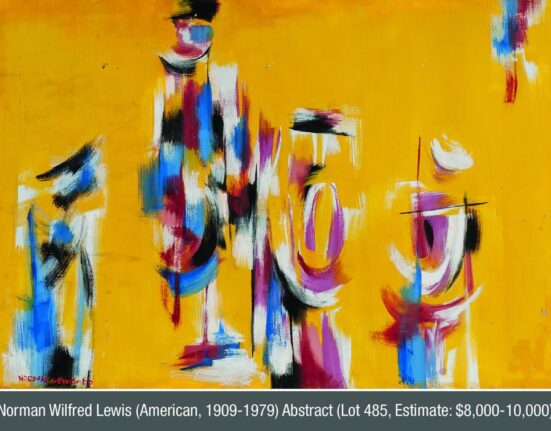Bioartists bridge art, born out of creativity and abstract thoughts, and science, which is rooted in facts, laws and logic, as a means of self-expression.
The term bioart was coined by Brazilian-American artist Eduardo Kac, who implanted a microchip in his ankle on live television, and registered himself in a pet database, as both the pet and the owner of the pet, in 1997. Kac’s controversial piece, Alba, was a genetically-modified rabbit whose genome was engineered to have the green fluorescent protein (GFP) gene found in jellyfish, that fluoresces green when exposed to blue light. When the rabbit was exposed to green light, Alba would glow green. While Kac viewed this as a work of art, critics and animal rights activists accused Kac and the scientists involved of animal exploitation and tampering with nature.
Over the years, bioart has become a strategy to both debate as well as embrace biotechnology through art, as the world is faced with the impact of global warming, drastic food insecurity and climate change.
In this article, let us take a look at five bioartists who have made their mark in the field, through their works of art – and science.
Alanna Lynch
Kombucha, the fermented black tea, thought to have probably originated in China, is known for its many health benefits. It is a powerful antioxidant – which fights molecules that cause damage to our cells – and contains acetic acid, which can kill harmful microorganisms. But what if the colonies of bacteria and yeast that thrive in kombucha are used to make art?
Alanna Lynch, a Berlin-based Canadian bioartist’s performance project Gut Feelings involved an audience that joined her in sipping on kombucha, and getting to better understand the symbiotic relationship between the bacteria and yeast in the drink, that has a probiotic effect on our guts. Her work aimed to unravel the interdependence of living organisms, and the role of other beings within the human body.
During the process of brewing kombucha, the microbes produce cellulose – a molecule that can be molded into any shape – which can be used as raw materials for clothes. Lynch created cellulose gloves as part of her project, a possible ode to sustainable fashion.
She also set up the Dissident Matter project, which was an installation that consisted of soil, composting worms, sculptures from worm castings, dead worms, cotton gloves, DIY stink bombs, magnifying glass and kombucha. The exhibition evoked the different senses including smell, sight and sound, as a means to depict the instability of matter, fermentation and decay on the planet, and to probe whether materials that are easily contaminated have a collective agency.
Jenna Sutela
An artist who brings together biology, technology and poetry in her work, Jenna Sutela is a Finnish bioartist based in Berlin. With an interest in exploring the symbiotic relationships between life forms, she creates audiovisual pieces and sculptures out of biomaterials. In particular, she works with Bacillus subtilis nattō bacterium – a kind of gram-positive bacteria that lives in the gastrointestinal tract – and the acellular slime mold Physarum polycephalum.
One of her most notable exhibitions is titled Gut Flora, which was presented at the Massachusetts Institute of Technology (MIT) Visual Art Center’s ‘Symbionts: Contemporary Artists and the Biosphere’. The trilogy began with Cerebrobacillus, which was made up of clay that was mixed with mammalian feces, along with breast milk, an exhibit aimed to unveil the workings of the human microbiome. It was alongside Lactogalaxius and Glossococcus, which also delved into the association of microbiomes in the gut. As more research goes into discovering how the gut-brain axis is critical to our wellbeing as well as its role in disease prevention, Sutela’s work takes a step further, and integrates machine learning into her art.
Her latest album nimiia vibié, features interactions between a neural network, audio recordings of what is thought to be early Martian language – based on a computer’s interpretation as well as the movement of Bacillus subtilis, which can supposedly survive on Mars – and microscopic footage of extremophilic space bacteria.
Having presented internationally at Guggenheim Bilbao, Museum of Contemporary Art Tokyo, and the Serpentine Galleries in London, she engages with artificial neural networks to create sculptures, images and music.
Moreover, she has collaborated with Markus Buehler, McAfee Professor of Engineering at MIT Civil and Environmental Engineering to sonify neurotransmitters like oxytocin. The team is focused on converting these molecular structures into sound. This is done by modeling the chemical structure of oxytocin and then converting it into vibrations.. A computer is taught how to recognize these vibrations, and as a result, the sonic toolkit Wet-on-Wet was created, which amplifies the sound waves of hormone molecules.
Anna Dumitriu
With a background in fine arts coupled with a fascination for microbiology, Anna Dumitriu is a bioartist in residence at the University of Surrey in the U.K.. Drawing from research in synthetic biology and genomics, Dumitriu’s latest work titled Unruly Objects and Biological Conservation, is a collaboration with The University of West Attica in Athens in Greece, that looks to explore the biochemistry of microbes that can help aid the preservation of artwork.
As museums seldom collect bioart because of the kind of materials used in bio artwork, her project is involved in the field of biological conservation and sets out to question what materials are acceptable in a museum environment. Using blockchain technology to store her artwork, the project is a series of marble carvings that are based on scanning electron microscope images of the microbes that eat away at art pieces and antiquities.
The project also includes biomaterial like mud and coronavirus from a plasmid construct – which was supplied by the researchers at the University of Leeds who are working with SARS-CoV-2 primers to develop RT-PCR detection kits from feces samples.
Another one of Dumitriu’s creations is the 1665 style Plague Dress, which is made from raw silk and hand-dyed using walnut husks – a reference to the herbalist Nicholas Culpeper, who, at the time of the plague, recommended walnuts to treat the disease. The DNA of the bacteria that causes the infectious disease, Yesinia pestis, was extracted from killed bacteria in a laboratory, and smeared on the dress, which has been stuffed with lavender. This is associated with a time when people in London supposedly held lavenders under their noses to mask the stench of the infection as well as to prevent the disease because they thought the plague was caused by ‘bad air.’
This year, her work Uninhibited Faba examines how the nitrogen-fixing faba bean can help mitigate climate change as well as tackle issues like food insecurity. It explores how this crop could potentially spur people to make a significant lifestyle change like shifting from a meat-based to plant-based diet.
Candice Lin
An interdisciplinary artist who works in installation, sculpture, drawing and ceramic, Candice Lin’s bioartistry peaked last year at MIT’s Symbionts: Contemporary Artists and the Biosphere. Lin’s exhibit, Memory, focused on the relationship between lion’s mane mushrooms and human beings, where a plastic bag holds a mushroom inside it. With health benefits that range from slowing memory loss in Alzheimer’s to helping treat anxiety and depression, the fungus gets its nutrients from dead organisms.
The exhibit mushroom is surrounded by a red, ceramic structure. Both, the mushroom and the red coral-like ceramic that the mushroom is enclosed in, seem to be growing onto each other, as a way to portray a symbiotic relationship between the two.
As a history buff, the bioartist created sculptures like Seeping, Rotting, Resting, Weeping two years ago, which is a temple-like structure that included textiles, ceramic cats, and a video animation guide for visitors. Lin has also used living silkworms, mulberry plants, ceramic fragments, and a taxidermied iguana, among other items, for her installations. Her pieces aim to take us back in time, and explore stories of artisanship, labor, ritual, botany, global trade and colonialism.
Other works by Lin, who has a B.A. in Visual Arts and Art Semiotics from Brown University in the U.S., include Pigs and Poison, which references Chinese laborers who were derogatorily called pigs, at the time of the opium war – the poison. The piece consists of a siege engine that launches cannonballs across a barbed wire-barricaded wall, which intends to make an example out of biological warfare during the 1346 siege of Caffa, where dead, plague-infected bodies were catapulted out of the cannonball engines, infecting people. This is thought to have been how the plague broke out in Europe.
Oron Catts
A prominent name in the bioartists’ circle, Oron Catts is an Australian researcher, artist and curator, known for pioneering the Tissue Culture and Art Project in 1996. With the help of other scientists, he created Victimless Leather, which is a stitchless jacket, made from immortal cell lines. The ‘leather’ is cultured inside a perfusion chamber. As clothes are often expressive of identity, class and politics, as well as of global commodity chains, and as the use of animal skin for clothes represents our attitudes towards animals, Catts attempts to explore the future consequences of using tissue engineering to develop clothes. As this process involves a lot of waste, the project looks to question whether lab-grown materials could in reality ever lead to a ‘victimless utopia.’
Along with award-winning artist Ionat Zurr, Catts founded SymbioticA: the Centre of Excellence in Biological Arts, School of Human Sciences at the University of Western Australia (UWA), which is a platform for wet biology projects.
The most recent exhibition at SymbioticA, which was called Sunlight, Soil & Shit (De)Cycle, looks at how in times of an ecological crisis, agricultural technology replaces sunlight, soil and manure in favor of artificial light, substrates and fertilizers. As part of the installation, it had a compostcubator, which is a compost pile that generates heat through microbial activity that is distributed through a water flow to the tissue culture incubator which is on top. This aids the growth of the cells to produce lab-grown meat. The cultured meat industry is presently making headway to cut down on livestock production, a process that takes up vast amounts of land and accounts for nearly 15% of global greenhouse gas emissions.
The exhibit also had a Hydroponic Garden, a type of garden that grows plants without soil. It is lit up by solar energy-powered artificial light. The plants are used as nutrients in the compostcubator.
The bioartist continues to collaborate with artists at SymbioticA, which offers undergraduate and postgraduate courses to young scientists looking to have a cross-disciplinary background in bioart.
Bioart: making a statement
Although still a niche field that merges science and art, it has been gaining more recognition as artists make use of their platforms to often make statements about what is going on in the world. Bioartist Oksana Kazmina from Syracuse University in the U.S., created her exhibit We Are All Here to Rot, a critique of Russia’s war against Ukraine. The exhibit featured print, memory foam and a video loop of Kazmina’s bacteria, to resemble the war-torn state of her homeland, Ukraine.
Like Kazmina, various bioartists are using their platforms to support causes they are passionate about and spur change through their bioartwork.







